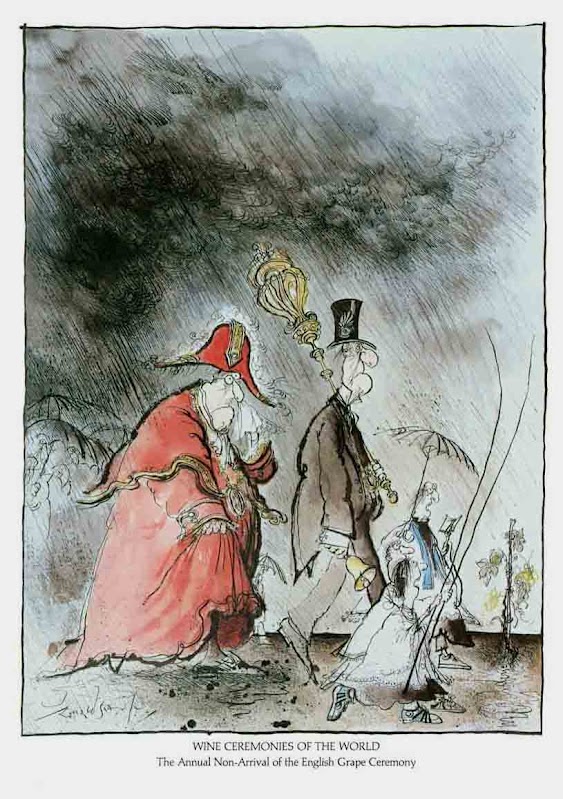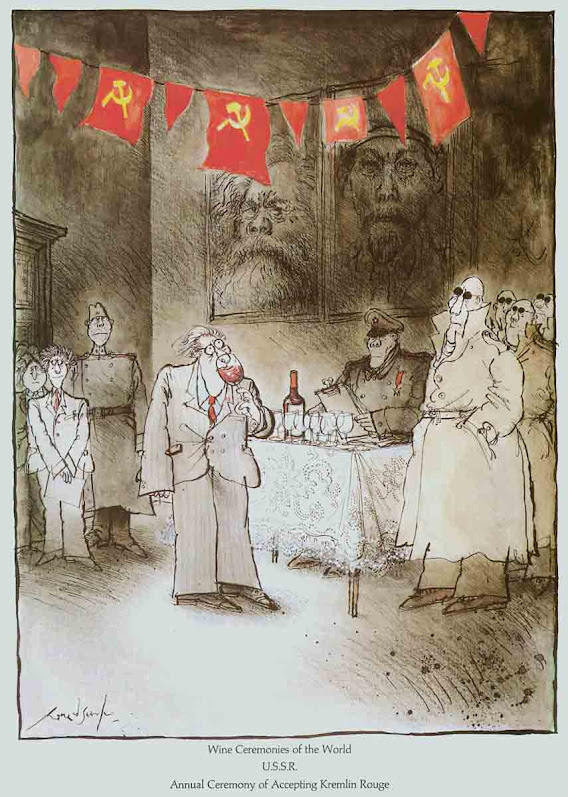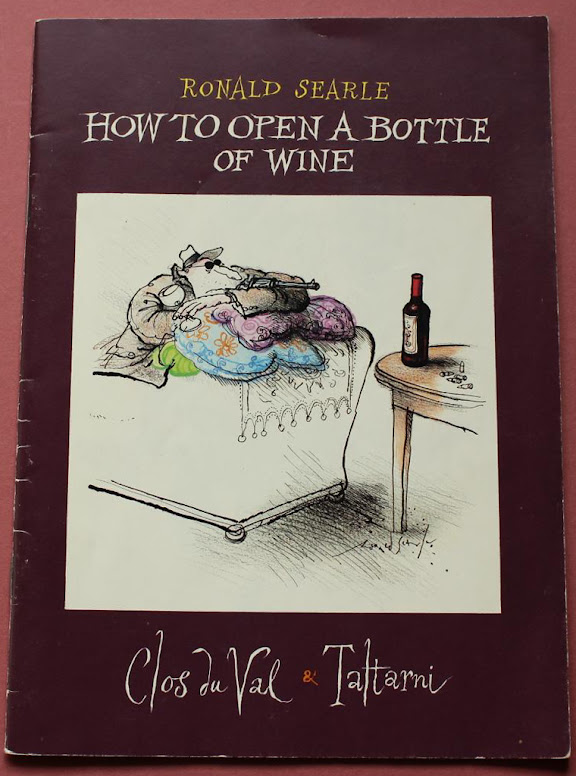The son of a railwayman, Ronald Searle was born in Cambridge on 3 March 1920, and educated in the town at the Boys' Central School. He started work as a solicitor's clerk, and then joined the hire purchase department of the co-operative Society, studying in the evenings and later full-time at the Cambridge Daily News from the age of fifteen.
Enlisting in the Royal Engineers at the outbreak of the Second World War, he spent time in Kirkcudbright, where he encountered evacuees from St. Trinian's, a progressive girls' school situated in Edinburgh.This resulted in his first cartoon for Lilliput, published in October 1941, and later developed into one of his most famous creations, through a series of books and their cinematic spin-offs. Remarkably, he survived the horrific experiences of the Changi Camp, Singapore as a Japanese prisoner-of-war and managed to produce a visual record of life in a prison camp.
On his return to England in 1945, he exhibited the surviving pictures at the Cambridge School of Art, and published Forty Drawings. The exhibition and volume together established his reputation as one of Britain's most powerful draughtsmen, and led to several opportunities to record the atmosphere of post-war Europe. He contributed to Punch and these drawings crystallised in, The Female Approach (1949). Throughout the fifties, he produced a large variety of illustrations, which together seemed present a guide to life in Britain in the 1950's.
Such was his success that his rejection of family and country in a move to Paris in 1961 came as a great surprise. However, it offered a fresh start, resulting in several solo shows, including a major exhibitions at the Bibliotheque Nationale, Paris, the Berlin-Dahlem Museum and the Wilhelm-Busch-Museum, Hanover. He also reached a new audience with his contributions to film and television, most notably The Magnificent Men in their Flying Machines (1965).
Note: Searle did too many works to post in one series, so I am posting them in two separate series: 1940-1960, and 1961-2007.
For a more detailed biography see part 1, and for earlier works, see parts 1 - 13 (series 1) & parts 14-21 (series 2)
This is part 22 of a 26-part series on the works of Ronald Searle:
1983 How to Open a Bottle of Wine:
1983 The Illustrated Winespeak:
 |
| Ages beautifully |
 |
| Bacchus & Co. |
 |
| Coarse but generous |
 |
| Distinctive nose |
 |
| Full bodied, with great character |
 |
| Full, fruity character |
 |
| Gay and sprightly |
 |
| Generally a little loose |
 |
| Lacks Subtlety |
 |
| Lots of class and much in demand |
 |
| Not a lot of depth but has substance |
 |
| Pleasantly scented, very agreeable |
 |
| Ripe but lacks concentration |
 |
| Should remain in cellar for two or three years |
 |
| Somewhat lacking in finesse |
 |
| Unpretentious |
1983 Wine Ceremonies of the World:
 |
Wine Ceremonies of the World
Australia
Uncorking the Kangarouge |
 |
Wine Ceremonies of the World
Brazil
Traditional Ceremony of Facing up to Room Temperature |
 |
Wine Ceremonies of the World
Byzantium
Frustrating Ceremony of Trying to Round-up Square Grapes |
 |
Wine Ceremonies of the World
The Annual Non-Arrival of the English Grape Ceremony |
 |
Wine Ceremonies of the World
France
Annual Festival of Welcome to Italian Wines |
 |
Wine Ceremonies of the World
Germany
The Ancient, Noble and Secret Ceremony of Slashing the Trockenbeerenauslese |
 |
Wine Ceremonies of the World
Holland
Historical but somewhat yucky ceremony of Pulling Out the Finger |
 |
Wine Ceremonies of the World
The European Community
Non-stop Festival of Sour Grapes |
 |
Wine Ceremonies of the World
U.S.A.
Blessing the Grapes, California Style |
 |
Wine Ceremonies of the World
Ireland
Touching and rather dampish Ceremony of Wailing O’er the Wine |
 |
Wine Ceremonies of the World
Italy
Inauguration of the First Authentic and Indisputable
Denominazione de Origine Controllata e Garantita |
 |
Wine Ceremonies of the World
Mexico
Everyday Ceremony of Trying to Stand Up to Manana |
 |
Wine Ceremonies of the World
U.S.S.R.
Annual Ceremony of Accepting the Kremlin Rouge |
 |
Wine Ceremonies of the World
Scotland
The Squeezing of the Bonnie Malted Grape |
 |
Wine Ceremonies of the World
South Africa
Colurful ceremony of Offering Limited Recognition to the Black Grape |
 |
Wine Ceremonies of the World
Spain
Ancient Festival of Hoofing the Rioja |
 |
Wine Ceremonies of the World
Transylvania
Legendary rites hailing the apparition of the Noble Rot |
1986 Ozzie Winespeak:

 |
A Good Reliable Style
pen and ink, coloured pencils and watercolour on wove paper
Fine Arts Museums of San Francisco, CA |
 |
| A Little Forward in Character |
 |
| Frequently Drunk Long Before Reaching Their Potential |
 |
| May Appeal to Those Who Like the Fuller Style |
 |
| Needs a Lift on the Nose |
 |
| Needs More Time to Round Out |
 |
| Rather Unusual |
 |
| Slightly Oily Palate |
 |
| The Cup |
 |
| Very Impressive Drinking Style |































































